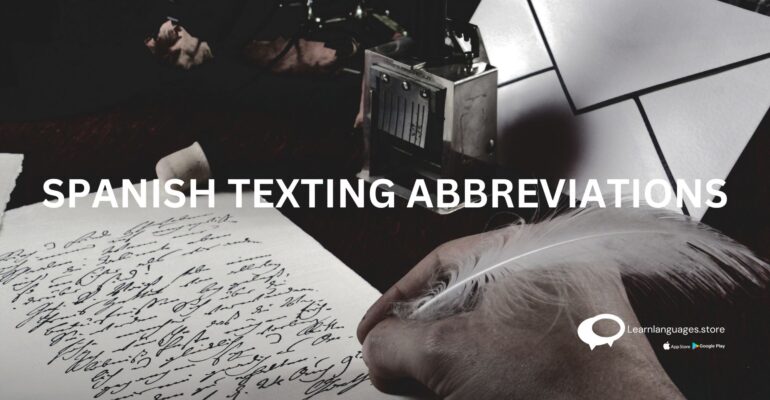SPANISH TEXTING ABBREVIATIONS
SPANISH TEXTING ABBREVIATIONS
A Simple and Quick Guide to Spanish Texting Abbreviations!
You’ve finished Latin American Spanish Level 2 by Pimsleur, added Spanish-language Netflix movies to your queue, and are just beginning to make Spanish-speaking friends. But now you immediately understand you’re in over your head when a remark on your photo reads “k linda t ves! tkm, cdt”! Do you require assistance with Spanish texting acronyms? Are you concerned that your SMS message will come off as insincere or robotic? We have your back. Let’s practice texting in Spanish.

Spanish Texting Techniques
Let’s be clear that SMS is practically extinct in Latin America before we continue. Cell phone contracts for a month or a year are nearly unheard of. Many people use pay-as-you-go methods and apps like Facebook Messenger and WhatsApp to send free messages.
When someone asks me, “How do I say “texting” in Spanish,” I normally respond, “Some Latinos say textear, even though it’s not yet an official word,” but Mándame un Whatsapp/mensaje is more typical. Send me a WhatsApp or text message. Since a message may be sent using an online service, it is more widely received.
The demise of old-school SMS does not always mean that acronyms are extinct. Just now, they switched platforms. The acronyms you’ll need to text in Spanish successfully are listed below.
Spanish abbreviations and acronyms for texting
The majority of the most typical Spanish texting acronyms are listed below:

Top 10 Texting Slang: Acronyms
Thank you for inviting. Thank you for the invitation.
Te quiero mucho (tkm or tqm). (I cherish you.)
Te amo and te quiero are two methods to express your love in Spanish. Te quiero mucho is a more informal way to say I adore you. Literally, that means I really desire you.
Q is frequently replaced by k due to its comparable phonetic sound.
NTP stands for No Te Worries. (Avoid worrying. – informal
No pasa nada is npn. No huge deal. or No issue.)
For your information, pti stands for “para tu información.”
Me da igual is mdi. (It is similar. or It makes no difference. Exactly translated, “It gives me equal.”
fds stands for the end of the week.
Te Lo Juro, or tlj! (You have my word! – informal
TKI stands for “I have to irm.” (I must leave.)

Top Spanish Texting Slang: Abbreviations
very well (muy bn) = muy bien
Porque = pq, pk, xq, xk? (Why?)
You may be aware that there are four ways to spell the word porque in Spanish: porque, porqué, por qué, and por que. These minute distinctions are meaningless in the texting world.
It turns out that porque can also be written as pq, pk, xq, or xk.
The q frequently takes the place of the k, as seen in tkm.
When referring to multiplication, the letter x is used in place of the word por. For instance, consider the phrase “3 x 4.” The phrase “3 times 4” is used in English, but “3 por 4” is used in Spanish.
Here is a summary of the 4 Spanish porques in case you wish to learn more about the various porques!
xfa = per fa (short for “please” or “por favor”). Once more, an x is used in place of the por.)
tmb and tmbn, which stand for “also” or “too,” are comparable to the English abbreviation “2” as in “me 2,” and they stand for también.
“
Learn Languages Store
Vashi,
Email: services@learnlanguages.store










